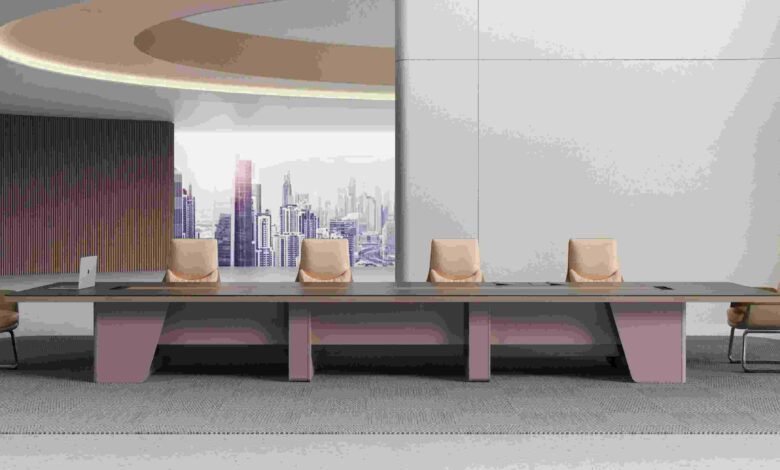What Are The Best Materials For An Office Conference Table

When selecting a conference table, the material is equally, if not more, important than the size and design. Office supplies determine an office conference table’s design, durability, maintenance needs, and even user experience. It may alter the overall ambiance of the conference space, affect long-term value, and send subtle messages about the company’s identity. Every material has unique qualities that make it suitable for a variety of workplace environments, from sleek glass tops and modern composites to traditional hardwoods. Understanding the benefits and drawbacks of each choice ensures that you select one that balances price, functionality, and beauty.
Solid Wood
Solid wood is one of the most prominent and traditional conference table materials. Its rich grain patterns, natural warmth, and long-lasting durability make it a popular choice for boardrooms and high-profile meeting places. Materials like oak, mahogany, walnut, and cherry are commonly used to create timeless designs that exude power and elegance. A solid wood table may last for decades with the right maintenance, acquiring character as its patina develops. However, because these tables are sometimes heavy and may be expensive, they are better suited for offices that want to invest in quality and attractiveness over the long run. They also require routine polishing and maintenance to maintain their luster.
Wood Veneer
Wood veneer tables are less expensive yet still have the look and feel of real wood. They are made by applying a thin layer of genuine wood on top of a base material, such as plywood or MDF. This design showcases the beauty of the natural wood grain while making it lighter and less costly. Businesses may match veneer tables to their existing decor because they are available in a wide variety of finishes. Although they are more resistant to warping than solid wood, they can crack or peel if improperly maintained. Given that they combine economy and style, they make sense for a lot of offices.
Laminate
Laminate is a highly popular material for modern conference tables, especially in businesses where durability and minimal maintenance are top concerns. Laminate may mimic the look of stone, wood, or other textures for a fraction of the cost. Laminate is made by covering a synthetic substrate with printed ornamental paper. It is ideal for high-traffic meeting areas because of its resilience to fading, stains, and scratches. Because laminate tables are so easily cleaned and come in a wide variety of colors and patterns, designers have the greatest possibilities. Laminate is quite useful for everyday usage, even if it doesn’t feel as opulent as real wood and might not be as distinguished in formal contexts.
Glass
Glass conference tables have a sleek, contemporary look that is perfect for contemporary companies and creative workstations. They usually have tempered glass for added strength and security, making them more resilient than regular glass. Glass surfaces reflect light, which makes rooms appear brighter and more spacious, which is very useful in smaller areas. They are also easy to clean and stain-resistant. They must be cleaned often to avoid fingerprints and smudges. Glass tables may feel chilly to the touch and produce noise when items are placed on them, so it’s important to match them with the right seats and accessories to guarantee comfort.
Stone and Marble
Marble and stone are the best conference tables that are an ideal choice for workplaces looking to create a dramatic, luxurious impression. Marble, granite, and quartz lend a sense of stability and sophistication to a meeting space. These materials’ inherent durability and heat resistance make them both practical and visually beautiful. Because of the natural veining patterns in the stone, every table is unique. However, stone tables are heavy and expensive, and they need to be handled and set up carefully. They could also be more susceptible to discoloration if improperly sealed. Despite these considerations, stone conference tables continue to be a popular choice for high-end corporate environments hoping to impress clients and partners.
Conclusion
The materials you choose for your conference table have an impact on how people utilize your meeting room as well as how it appears. From the timeless beauty of solid wood to the sleek modernism of glass and the durable usefulness of laminate, each choice has advantages. By balancing visual appeal, durability, maintenance needs, and budget, you may discover the perfect material to match the personality and operational needs of your company. A well-chosen conference table material is an investment in functionality as well as the image your business leaves on each visitor.
For more articles, visit: https://oneguia.com/




